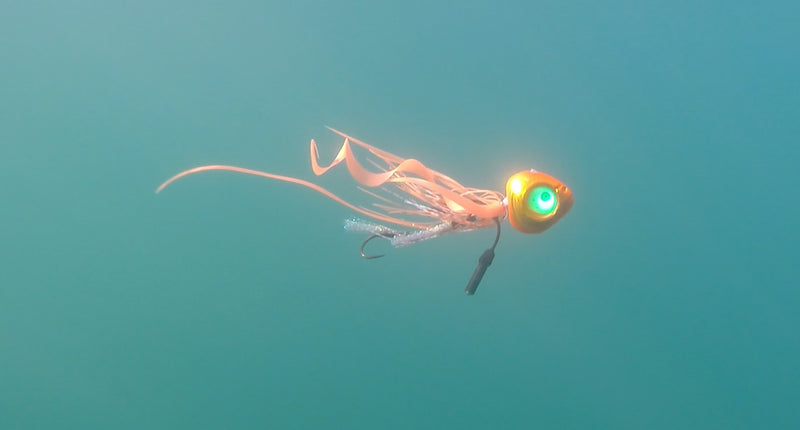

There is no doubt about it, slider lures are an extremely effective way to target snapper and other saltwater species in New Zealand.
The question that I often get asked when someone is about to head out fishing is “which colour of slider fishing lure is best?” And the answer is “well, it depends…”
All lures are designed to attract the attention of predatory fish, either visually, via sound, vibration, smell, or some combination of these factors. For now, let’s focus on the visual attraction of sliders. Typically slider (or Kabura style) lures are fished in depths between 15 and 70 meters. They are designed to imitate a squid or octopus moving along gently, just above the bottom while the boat above is slowly drifting. Normally these lures are most effective when they are not being moved fast. They should present a non-threatening meal that even the most cautious predator is willing to sneak up on and test whether they have found dinner by mouthing the tail that wafts so enticingly.
For the slider to catch the fish, it first needs to be seen by the fish, but there should not be sudden movements and there is not a lot of light at the depth where it is being used, so shiny, silvery, reflective lures do not necessarily offer a big advantage. As water gets deeper it acts like a filter, first removing light wavelengths that are at the red and infra-red end of the spectrum, then progressively through the colours of the rainbow (remember the old acronym ROGYBIV?) The last colours, the ones that penetrate deepest into any water are at the blue and ultraviolet end of the spectrum.
This means that lure colours which reflect ultraviolet light are most likely to reflect the light available and be seen in deeper water. These are your “high-vis” colours, the ones that tradies wear; dazzle orange, pink and yellow. Ask any seasoned user of slider lures which one is their favourite and they will most likely pull something bright orange, hot pink or chartreuse yellow-green from their tackle box.

Do these lure colours match other species that predators are feeding on?
In some cases the answer may be yes. There are many tasty things in the ocean that are orange, think about many fish eggs, baby crayfish and even baby snapper (yes, I have seen many snapper caught over the years with their own offspring in their stomach contents). Likewise, many squid species are found in pink shades and many small reef fish come in different hues of green.
When trying to determine which slider colour is best, it often pays to have several different colours in your tackle box, or better still, spread amongst those who are fishing on the day. When one colour is found to be performing better than the others this is often an indication that it has “matched the hatch” and is the best colour for simulating what the fish are eating on that particular day. Be prepared for changes though, what fish are eating can vary as the tide changes and/or the amount of sunlight changes through the day.

Highly UV reflective colours are more likely to be noticed by fish at depth, but a flashing light takes things to the next level because it commands attention regardless of how deep and dark the water is.
There is another way to make sure you get the right lure colour when you have finally finished work are managing to enjoy some time on the water; try choosing a lure with a built in flashing light! Because the light is emitted from the lure, the problem of which colours penetrate down through the water column is eliminated. A red flashing light is red, regardless of whether it is 1 meter below the surface or 100 meters. Better still, a lure which flashes red, white and then green sends these three colours out to be noticed by predator fish. These fish then come in for a closer look and see the colours that you have chosen for the lure head and lure tail. The result is a nibble, and then because you have cleverly used small hooks that are positioned up in the lure skirt, the nibble becomes a hook up, and pretty soon that hook up becomes dinner!
Check out my other blogs for more slider features that will ensure you catch more fish.
